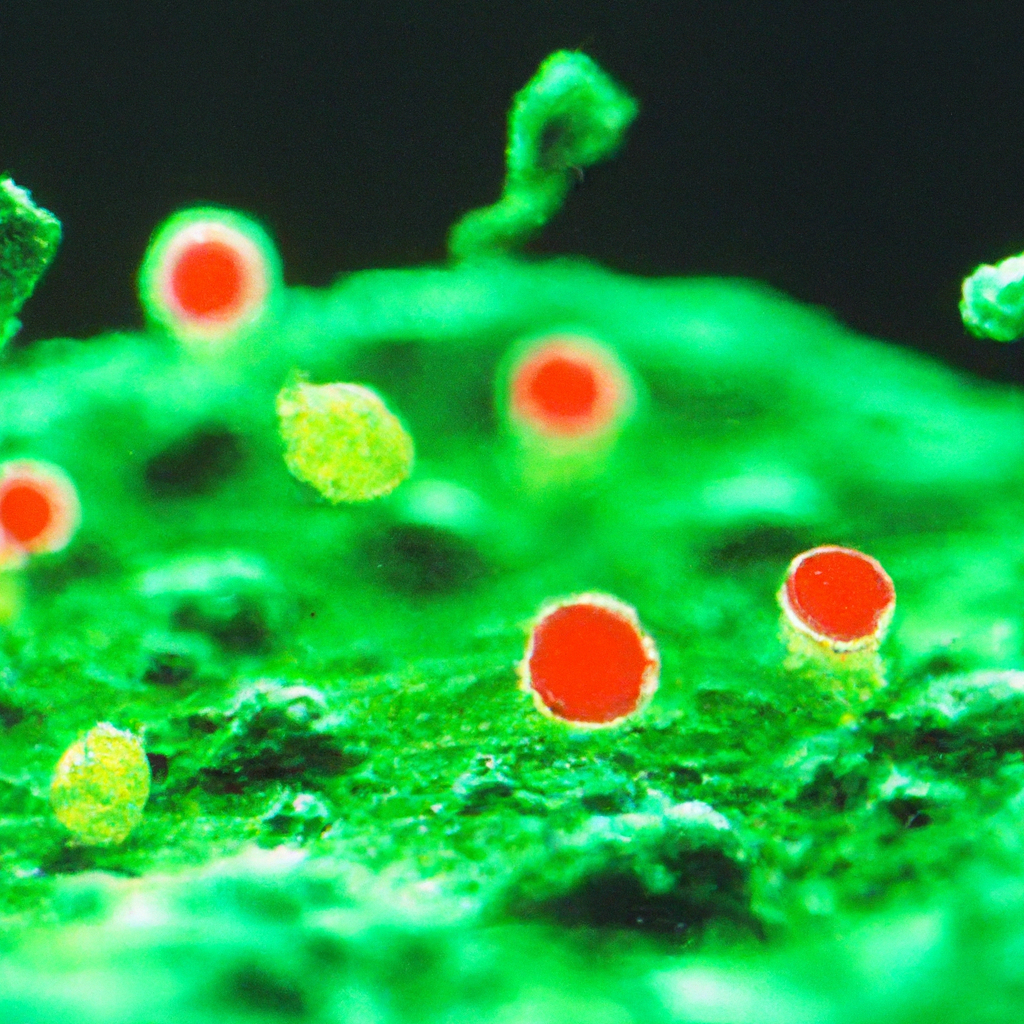Have you ever wondered about the role of stem cells in developing new cancer treatments in Malaysia? Stem cells have become a significant area of research in the fight against cancer. In this article, we will explore the fascinating world of stem cells and their potential for revolutionizing cancer treatment. With a focus on Malaysia, we will delve into the latest advancements and discoveries, shedding light on how stem cells hold immense promise in developing cutting-edge therapies. So, join us as we embark on a journey to understand the critical role that stem cells play in paving the way for innovative cancer treatments in Malaysia.
1. Understanding Stem Cells
1.1 Definition of Stem Cells
Stem cells are undifferentiated cells that have the unique ability to differentiate into specialized cell types in the body. They have the potential to divide and renew themselves for long periods, and they can give rise to any cell type in the body. This remarkable regenerative capacity makes stem cells a promising tool in the field of medical research and treatment.
1.2 Types of Stem Cells
There are several different types of stem cells, each with its own unique properties and potential applications. Embryonic stem cells, which are derived from early-stage embryos, are pluripotent and can give rise to any cell type in the body. Adult stem cells, on the other hand, are found in various tissues and organs throughout the body and are multipotent, meaning they can differentiate into a limited range of cell types. Additionally, induced pluripotent stem cells (iPSCs) can be generated by reprogramming adult cells and have characteristics similar to embryonic stem cells.
1.3 Properties of Stem Cells
Stem cells possess a set of key properties that distinguish them from other types of cells. These properties include self-renewal, the ability to differentiate into specialized cell types, and the ability to give rise to an unlimited number of daughter cells. Stem cells also have the ability to migrate to sites of tissue damage or disease, making them potentially useful in regenerative medicine and targeted therapies.
1.4 Stem Cell Research and Development
stem cell research plays a crucial role in advancing our understanding of stem cells and their potential applications. Scientists conduct research to explore the fundamental properties of stem cells, investigate their differentiation mechanisms, and develop novel therapeutic approaches. Stem cell research also involves studying the ethical implications and regulatory frameworks surrounding their use. Through ongoing research and development, scientists aim to harness the full potential of stem cells in various fields, including cancer treatment.
2. Cancer in Malaysia: An Overview
2.1 Cancer Statistics in Malaysia
Cancer is a significant health issue in Malaysia, with a growing number of cases being diagnosed each year. According to the Malaysian National Cancer Registry, the incidence of cancer in Malaysia has been steadily increasing. In 2020, there were approximately 131,000 new cancer cases reported, with breast, colorectal, lung, and cervical cancers being the most prevalent types.
2.2 Common Types of Cancer in Malaysia
Breast cancer is the most common type of cancer among Malaysian women, accounting for a significant number of cases. Colorectal cancer is the second most frequently diagnosed cancer in both men and women, followed by lung cancer. Other prevalent cancers in Malaysia include cervical, liver, and prostate cancers. The high prevalence of these cancers underscores the need for effective treatments and interventions.
2.3 Current Cancer Treatments in Malaysia
In Malaysia, cancer treatments typically involve a combination of surgery, chemotherapy, radiation therapy, and targeted therapies. These treatments, while effective to some extent, often come with side effects and may not offer a complete cure for all patients. Therefore, there is a continuous search for innovative and more targeted approaches to improve cancer treatment outcomes.

3. Introduction to Stem Cell Therapy for Cancer
3.1 What is Stem Cell Therapy?
Stem cell therapy, also known as regenerative medicine, involves the use of stem cells to replace or repair damaged cells or tissues. In the context of cancer treatment, stem cell therapy aims to harness the regenerative potential of stem cells to target and eliminate cancer cells. This approach holds promise for improving cancer treatment outcomes and minimizing side effects associated with conventional therapies.
3.2 Mechanisms of Stem Cell Therapy in Cancer Treatment
Stem cell therapy for cancer treatment works through various mechanisms. One approach involves the use of stem cells to deliver therapeutic agents directly to tumor sites, enabling targeted drug delivery and minimizing systemic toxicity. Stem cells can also be engineered to express therapeutic genes that specifically target cancer cells. Additionally, stem cells can modulate the immune system, enhancing anti-tumor responses and reducing immunosuppression.
3.3 Advantages of Stem Cell Therapy for Cancer
Stem cell therapy offers several advantages in the field of cancer treatment. Firstly, stem cells have the potential to differentiate into multiple cell types, making them versatile in their therapeutic applications. Secondly, stem cells can be derived from different sources, including the patient’s own body, reducing the risk of immune rejection. Additionally, stem cell therapy holds the potential to regenerate and restore damaged tissues, offering a more comprehensive approach to cancer treatment.
3.4 Challenges and Limitations of Stem Cell Therapy
While stem cell therapy shows great promise, there are still challenges and limitations that need to be addressed. One major challenge is the potential for uncontrolled proliferation of transplanted stem cells, leading to the formation of teratomas or other unwanted tissues. Another limitation is the limited availability of suitable sources for stem cell transplantation, especially for certain types of cancer. Additionally, the high cost and complex infrastructure required for stem cell therapy pose barriers to widespread implementation.
4. Stem Cell-based Approaches in Cancer Treatment
4.1 Stem Cell Transplantation
Stem cell transplantation, also known as bone marrow transplantation, is a well-established approach used in cancer treatment. It involves the infusion of healthy stem cells into a patient’s bloodstream to replace the damaged or cancerous cells. This procedure is commonly used in the treatment of hematological cancers such as leukemia and lymphoma. Stem cell transplantation can restore the patient’s immune system and provide a new source of healthy blood cells.
4.2 Gene Therapy using Stem Cells
Gene therapy using stem cells offers a promising approach to target and modify cancer cells at the genetic level. Stem cells can be engineered to express therapeutic genes that specifically target and kill cancer cells. This approach has the potential to overcome the limitations of traditional chemotherapy and radiation therapy by directly targeting cancer cells and sparing healthy cells. Gene therapy using stem cells is still a nascent field but holds great promise for the future of cancer treatment.
4.3 Targeted Drug Delivery with Stem Cells
Stem cells can serve as carriers or “vehicles” to deliver anticancer drugs directly to tumor sites. By engineering stem cells to express specific receptors that bind to cancer cells, therapeutic agents can be delivered precisely to the tumor, minimizing off-target effects and reducing systemic toxicity. This targeted drug delivery approach holds the potential to enhance the efficacy of cancer treatments while minimizing adverse side effects.
4.4 Immune System Modulation through Stem Cells
Stem cells can modulate the activity of the immune system, making them valuable tools in cancer immunotherapy. By enhancing the body’s natural immune response to cancer cells, stem cells can help to boost the immune system’s ability to recognize and destroy cancer cells. This approach has shown promise in clinical trials and offers a potential breakthrough in the treatment of various types of cancer.

5. Stem Cell Research and Clinical Trials in Malaysia
5.1 Current Status of Stem Cell Research in Malaysia
Stem cell research in Malaysia has gained significant momentum in recent years. The government and various research institutions have invested in establishing state-of-the-art stem cell research facilities and laboratories. This has led to significant advancements in stem cell research and a growing number of researchers and scientists working in this field.
5.2 Milestones in Stem Cell Research for Cancer Treatment
Malaysia has made notable milestones in stem cell research for cancer treatment. Researchers have successfully isolated and characterized various types of stem cells from different sources, including bone marrow, adipose tissue, and umbilical cord blood. These milestones have paved the way for further research and the development of stem cell-based therapies for cancer in Malaysia.
5.3 Clinical Trials of Stem Cell-based Cancer Treatments in Malaysia
Malaysia has also seen the initiation of several clinical trials involving stem cell-based cancer treatments. These trials aim to evaluate the safety, efficacy, and feasibility of using stem cells in cancer treatment. The results of these trials will contribute to the body of evidence supporting the use of stem cell therapy and guide future research and development in this field.
6. Regulatory Framework and Ethical Considerations
6.1 Regulations on Stem Cell Research in Malaysia
The conduct of stem cell research in Malaysia is regulated by various authorities to ensure scientific rigor and ethical standards. The Malaysian National Stem Cell Registry oversees the registration and monitoring of stem cell research activities. Researchers are required to adhere to strict guidelines and obtain ethical approvals before conducting stem cell research. These regulations aim to protect the rights and well-being of patients and ensure the responsible use of stem cells in cancer treatment.
6.2 Ethical Considerations in Stem Cell Research for Cancer Treatment
Stem cell research raises important ethical considerations, particularly in the context of cancer treatment. These considerations include the procurement and use of human embryonic stem cells, the consent process for stem cell donation, and the potential risks associated with stem cell transplantation. Researchers and healthcare professionals must balance the potential benefits of stem cell therapy with the ethical implications and ensure transparency throughout the research and treatment process.

7. Success Stories and Advances in Stem Cell-based Cancer Treatments
7.1 Case Studies of Successful Stem Cell Therapies in Malaysia
Malaysia has witnessed several success stories in the field of stem cell-based cancer treatments. Case studies have shown promising results in the treatment of various cancers, including leukemia, breast cancer, and liver cancer. These success stories highlight the potential of stem cell therapy as a viable and effective treatment option for cancer patients in Malaysia and beyond.
7.2 Breakthroughs and Innovations in Stem Cell-based Cancer Treatments
Continued research and innovation in stem cell-based cancer treatments have led to significant breakthroughs in Malaysia. Scientists and researchers are exploring new techniques for stem cell transplantation, developing novel targeted therapies, and advancing our understanding of the role of stem cells in the tumor microenvironment. These breakthroughs have the potential to revolutionize cancer treatment and improve patient outcomes.
8. Funding and Support for Stem Cell Research
8.1 Government Initiatives and Funding for Stem Cell Research
The Malaysian government recognizes the importance of stem cell research and has implemented various initiatives to support and fund research in this field. The Ministry of Science, Technology and Innovation, along with other government agencies, provides grants and funding opportunities for stem cell research projects. This support has been instrumental in advancing stem cell research, facilitating collaborations, and fostering innovation in cancer treatment.
8.2 Private Sector Investments in Stem Cell-based Cancer Treatments
In addition to government funding, the private sector plays a significant role in supporting stem cell research and development for cancer treatment. Pharmaceutical companies, biotechnology firms, and healthcare providers are investing in the development and commercialization of stem cell-based therapies. These investments contribute to the growth of the industry and provide resources for further research and clinical trials.
8.3 Collaboration and Partnerships in Stem Cell Research
Collaboration and partnerships between academic institutions, research organizations, and industry stakeholders are crucial in advancing stem cell research in Malaysia. These collaborations promote knowledge exchange, facilitate access to resources and expertise, and enhance the translation of stem cell research findings into clinical applications. By working together, researchers and stakeholders can effectively address the challenges and accelerate the development of stem cell-based cancer treatments.

9. Future Perspectives and Potential in Malaysia
9.1 Emerging Trends and Technologies in Stem Cell Research
The field of stem cell research is constantly evolving, with emerging trends and technologies shaping its future. Rapid advances in gene editing technologies, such as CRISPR-Cas9, hold the potential to revolutionize stem cell-based therapies by providing precise and efficient genome editing tools. Additionally, advancements in tissue engineering and 3D bioprinting are paving the way for the creation of functional tissues and organs for transplantation.
9.2 Potential Applications of Stem Cells in Cancer Treatment
Stem cells hold tremendous potential in the field of cancer treatment. In addition to their regenerative capabilities, stem cells can be engineered to express anti-cancer agents, target specific tumor markers, or modulate the immune system. These advancements have the potential to improve treatment outcomes, reduce side effects, and enhance the quality of life for cancer patients.
9.3 The Role of Malaysia in Advancing Stem Cell-based Cancer Treatments
Malaysia is well-positioned to play a significant role in advancing stem cell-based cancer treatments. The country’s robust research infrastructure, supportive regulatory framework, and collaborations with international partners create a conducive environment for cutting-edge research and clinical trials. With continued investment in research and development, Malaysia can contribute to the global effort in developing new and innovative cancer treatments using stem cells.
10. Conclusion
Stem cells offer immense potential in the development of new cancer treatments in Malaysia. The unique properties of stem cells, combined with ongoing research and clinical trials, hold the promise of revolutionizing cancer treatment and improving patient outcomes. However, there are still challenges and ethical considerations that need to be addressed. With the support of government initiatives, private sector investments, and collaborations, Malaysia can continue to make significant strides in stem cell research and pave the way for a future where stem cell-based cancer treatments become a standard of care.





